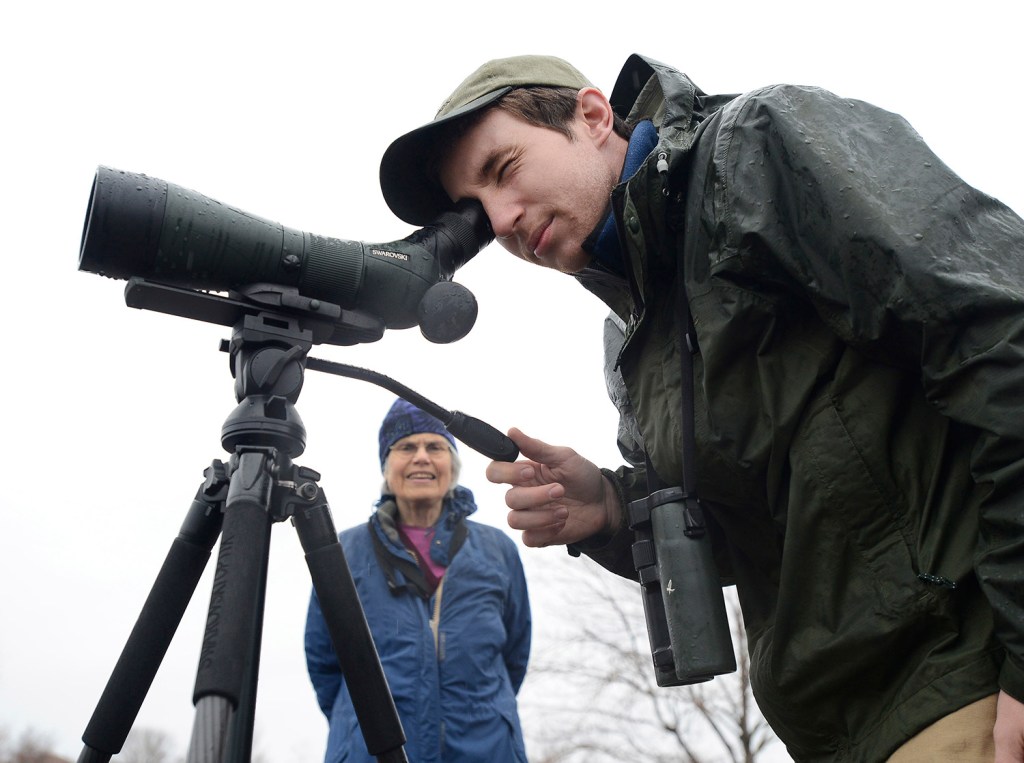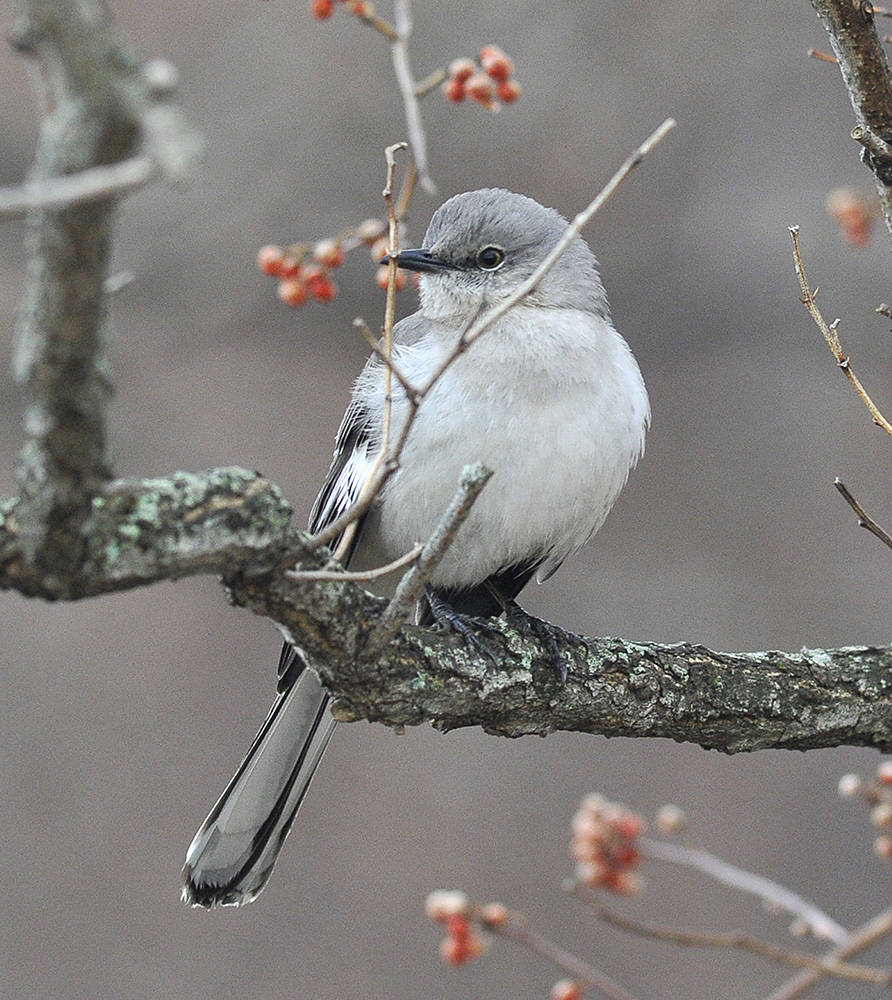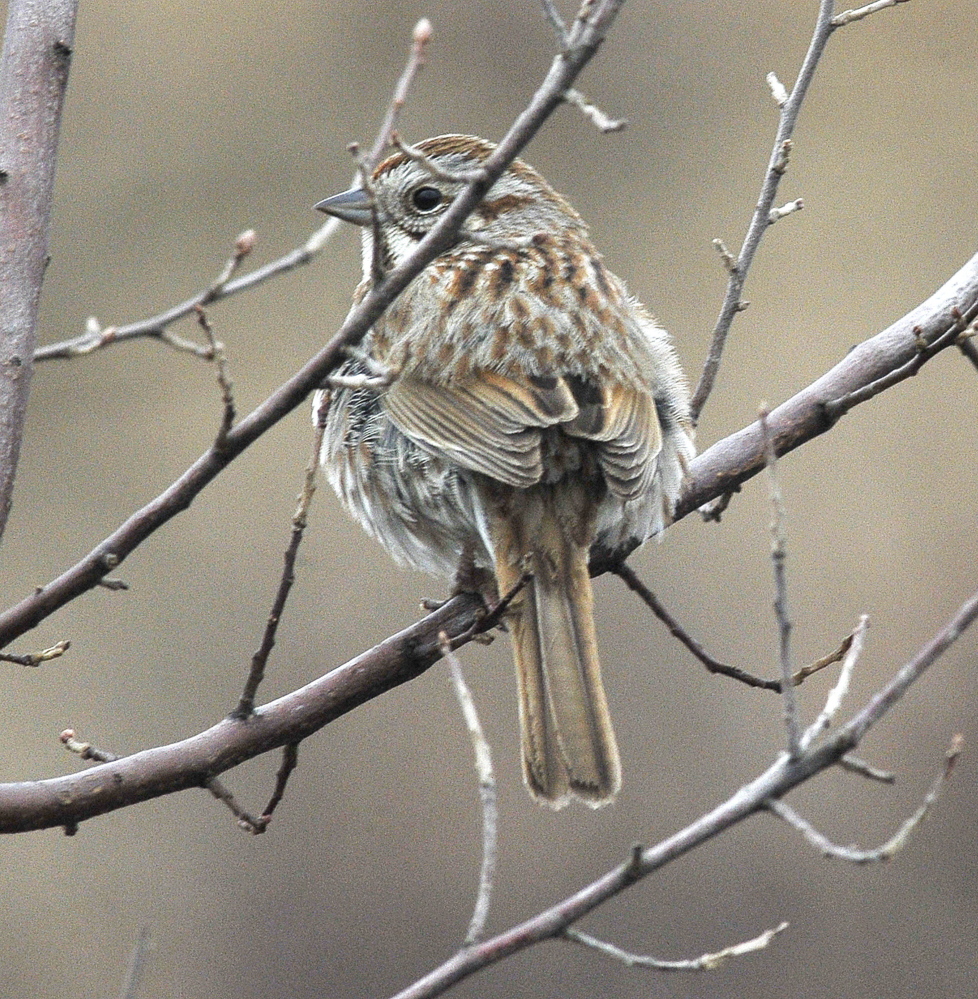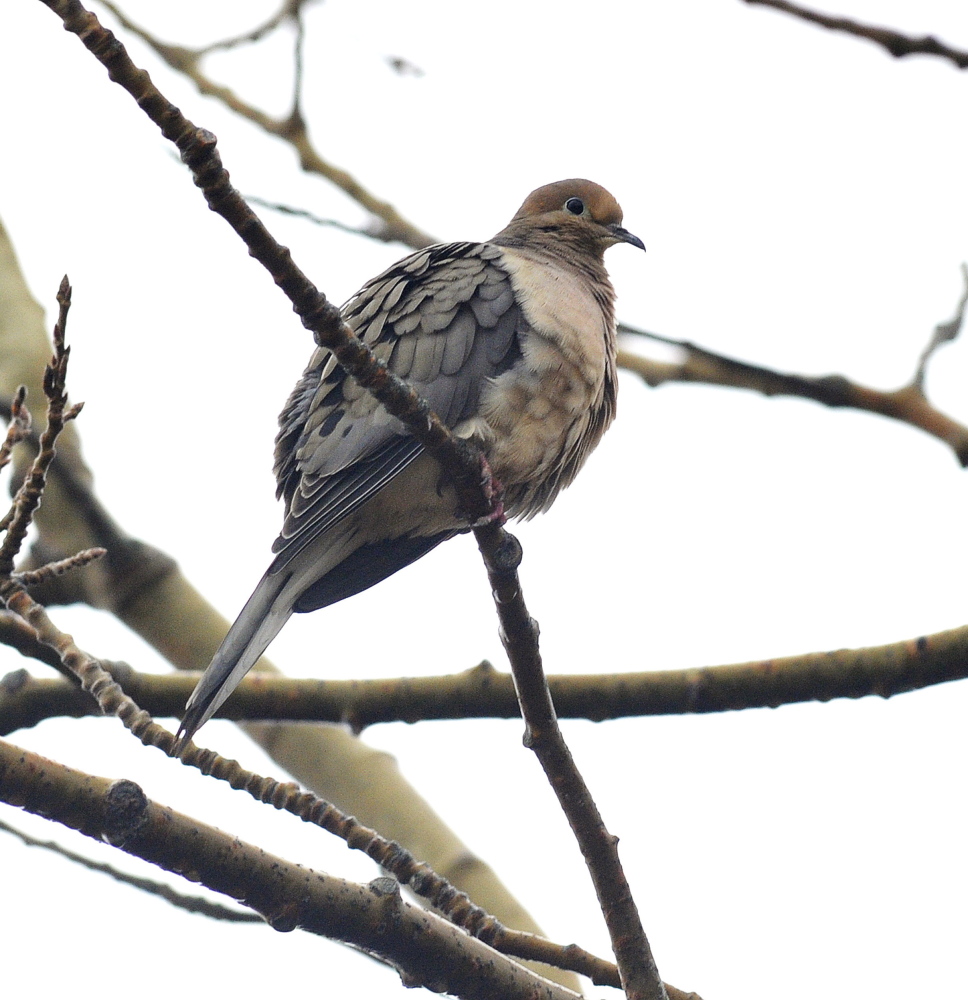Maine Audubon naturalist Doug Hitchcox goes to great lengths to see rare birds, driving in a single day from Portland to places as far away as Halifax, Nova Scotia, and the New Jersey coast. One time he hopped in the car and headed to Rangeley, only to strike out in his pursuit of a black-backed woodpecker.
This year, Hitchcox, 26, hopes to make the search for the spectacular and ordinary birds easier for those in Greater Portland by teaching more people about “patches.” A patch is a defined wild area that you can easily visit each day. It’s a park or place you pass by. It could even be your backyard.
Adopting a birding patch is a basic exercise for experienced birders. It’s easy for those new to birding.
Hitchcox is hoping that the adopt-a-patch approach will help to recruit others to the avocation.
“I want to try to introduce people to little places in Portland, to try to make the outdoors more accessible. People don’t realize the biodiversity we have right in Portland,” he said.
Last week at Portland’s Eastern Promenade, Hitchcox led seven birders in the rain in search of the expected and unexpected. Among their finds: song sparrows, a couple of mockingbirds and a loud cardinal.
“This scrubby patch on the hill is good habitat. Had the sun been out this morning it would have warmed the hill, the bugs would have been flying, and we might have seen a flycatcher or warbler,” Hitchcox said. Despite the wet conditions, there were some surprises: a Northern shoveler flying overhead, a loon calling from Casco Bay, two male mergansers vying for a female, and male buffleheads doing their ridiculous-looking, head-bobbing courtship display.
“That shoveler is arguably a great bird to see on April 14. And to hear loons yodeling, I didn’t expect that,” Hitchcox said.
When Eastern Promenade ranger Christian Wilkens happened upon the group, he shared one of the promenade’s best features: the osprey nesting on the railroad trellis.
“That osprey had two chicks last summer. We got to watch them all summer. Then they finally managed to get the young ones to stop freeloading,” Wilkens said. “It’s quite an amazing experience to be able to see wildlife like that.”
Kristina MacCormick already knew of the osprey. A birder of 20 years, MacCormick said she could have come to the promenade by herself and found many of the birds Hitchcox identified. But the Audubon naturalist revealed one or two more. That made the guided walk worthwhile for her.
“Some people want to be the first one to see a bird. They’re not satisfied unless they are the first. I don’t have that feeling. I like to see the birds,” MacCormick said.
Patches are perfect for birders like MacCormick. It’s not about being the first to find a migrating warbler. Patches require only that you know the birds in your favorite swath of woods or meadow.
At 26, Hitchcox is younger than most of the birders he leads on walks. He grew up in Hollis and has been birding across the state his entire life. His focus is more young birders like himself. He also wants to introduce seniors to technological advances in birding.
On his hybrid car Hitchcox has the bumper sticker: “Do you e-bird?”
The website e.bird.org opens up a world of birding data and ways to record bird sightings. It encourages birders to keep patches, explaining: “Examples such as Hunting Center Park in Huntington Beach (California), Montrose Point in Chicago, or Central Park in Manhattan are all straightforward and obvious patches.”
The Eastern Promenade is another good example.
Samaa Abdurraquib joined Hitchcox’s walk last week. As someone who is new to birding and to Maine, Abdurraquib wanted to become more familiar with a birding spot she could visit every day.
Abdurraquib has been to the usual birding hot spots in southern Maine, such as Biddeford Pool, Evergreen Cemetery in Portland and the Scarborough Marsh. But she wanted a place she could visit on the way to work on the Portland peninsula.
“I had never birded on the Eastern Prom and I’ve been here for a year. I work fairly close by,” Abdurraquib said. “I did know about the osprey that nests there but I didn’t know about the buffleheads. I think I’ll be back. You can see a lot of birds in a short amount of time there.”
Send questions/comments to the editors.











Comments are no longer available on this story